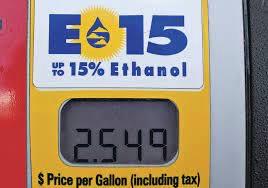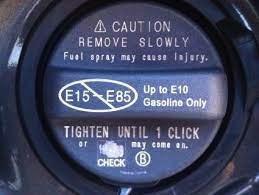 Senator Deb Fischer (R-NE) has introduced the Consumer and Fuel Retailer Choice Act. This legislation would harmonize state regulations and allow for year-round use of E-15 ethanol blend. The Bill is supported by a bipartisan group of senators from all corn-producing states. Senator Fischer stated, “Our bipartisan legislation is the only permanent, nationwide solution to unleashing the power of year-round E-15. It’s why we’ve been able to bring together a diverse group of stakeholders from the oil, gas, biofuel, agriculture and transportation sectors to support our legislation.”
Senator Deb Fischer (R-NE) has introduced the Consumer and Fuel Retailer Choice Act. This legislation would harmonize state regulations and allow for year-round use of E-15 ethanol blend. The Bill is supported by a bipartisan group of senators from all corn-producing states. Senator Fischer stated, “Our bipartisan legislation is the only permanent, nationwide solution to unleashing the power of year-round E-15. It’s why we’ve been able to bring together a diverse group of stakeholders from the oil, gas, biofuel, agriculture and transportation sectors to support our legislation.”
U. S. Representatives Adrian Smith (R-NE) and Angie Craig (D-MN) have introduced companion legislation in the House.
The major obstacle to E-15 blend will be the number of vehicles equipped to receive a higher level of ethanol. The second problem will be delivering higher blends. This will require either separate tanks or multiblend pumps. Irrespective of the system adopted, capital investment will be required with federal funding. This will conflict with current Administration policy of expanding electric charging stations for electric vehicles. Increasing the blend rate will resolve the problem of the ongoing ‘blend ceiling’. Although the cost to consumers of E-15 blend will be lower than E-10, the advantage will be  offset by lower miles per gallon since ethanol effectively dilutes the energy content of gasoline.
offset by lower miles per gallon since ethanol effectively dilutes the energy content of gasoline.
Greater demand for fuel ethanol is currently limited by the 10 percent “blend ceiling”. Extending to an E-15 blend would result in diversion of more corn to ethanol with a consequential increase in the price of livestock feeds that will ultimately be inflationary. The move to E-15 will increase production of ethanol with the consequences of more abstraction of water from aquifers and release carbon dioxide from plants to the atmosphere.